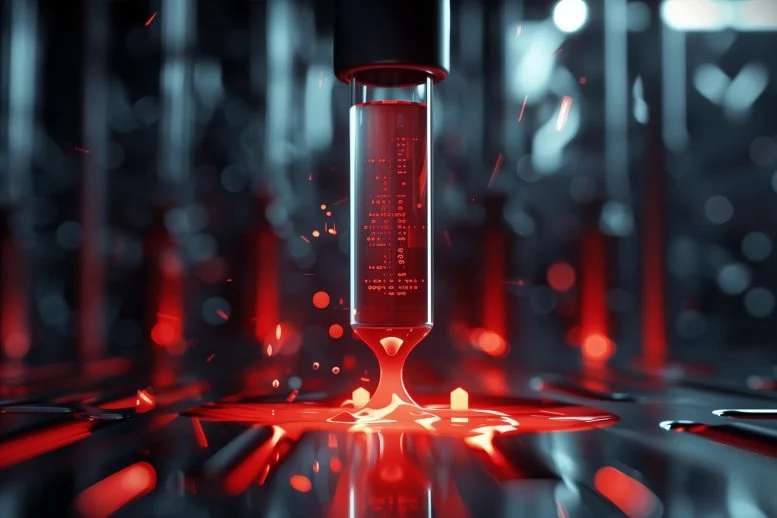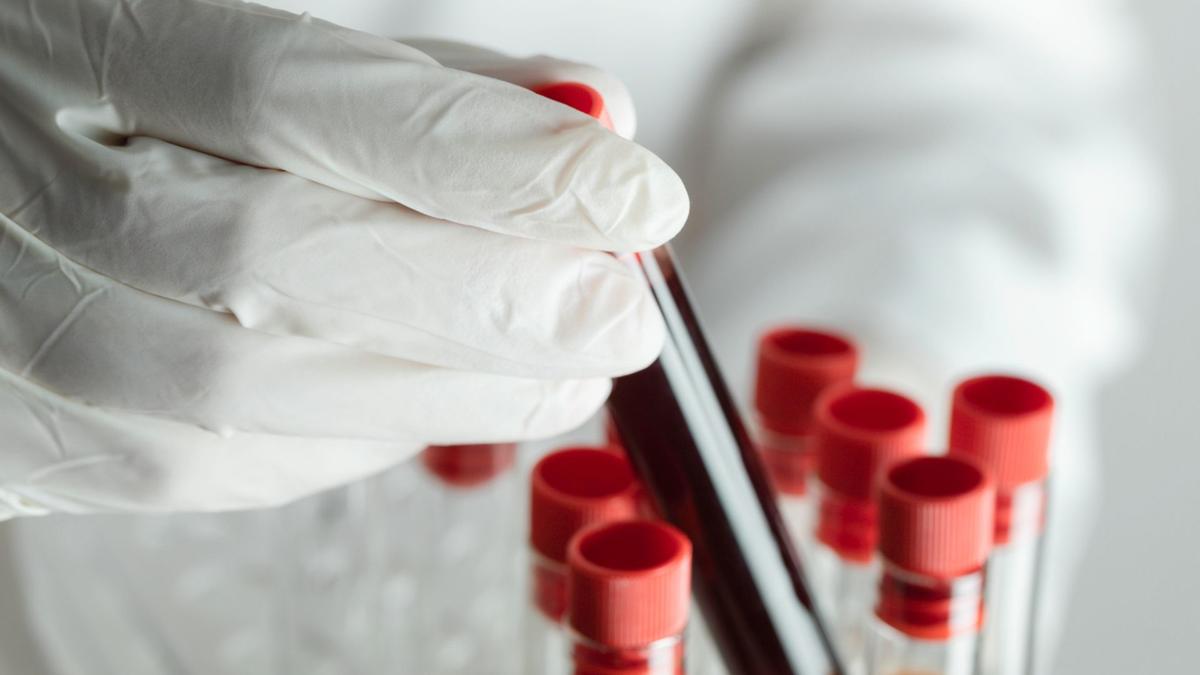A research team has just announced a breakthrough, wearable device powered by blood that generates energy to power medical diagnosis right at the point of need—very up-to-date against a global surge of metabolic diseases like diabetes. The new “lab-on-a-chip” technology is likely to change health care delivery, especially in poor resource regions where access to traditional diagnostic centers is limited.
Disorders such as diabetes and osteoporosis are increasingly widespread and are now affecting people worldwide, with the highest burdens of the disease in developing countries that lack adequate health infrastructure. Diagnosis and management rely on blood tests, but due to logistical challenges in most cases, individuals remain undiagnosed and untreated. The current methods are labor-intensive, invasive, and impractical for real-time monitoring in remote and rural settings.

Developed by researchers at the University of Pittsburgh and the University of Pittsburgh Medical Center, the device touts breakthrough technologies in nanotechnology and microfluidics. It works through an increase in blood conductivity to diagnose medical conditions quickly and effectively, independent of geographical location.
According to Dr. Amir Alavi, assistant professor of civil and environmental engineering at the University of Pittsburgh’s Swanson School of Engineering, the outlook is very promising for lab-on-a-chip technology. “As nanotechnology and microfluidics proceed further, a good opportunity already exists in building devices that can transcend the confines of traditional medical care. Such innovations could eventually bring a sea change in health care by rendering quick, handy diagnostics to suit patient outcome and efficient medical service.”
Blood conductivity is an important diagnostic measure. It depends on the concentration of electrolytes, namely, sodium and chloride ions. According to Dr. Alan Wells, medical director of UPMC Clinical Laboratories and a professor at Pitt School of Medicine, “Blood, as it is essentially a water-based medium, contains molecules which conduct or impede electric currents. Glucose conducts electricity; that’s how we can diagnose conditions through conductivity measurements.”
Such methods of measuring blood conductivity are promising but have their drawbacks, including electrode polarization or the requirement of homogeneous blood samples. In an effort to compensate for these drawbacks, the researchers have developed a portable, millifluidic nanogenerator lab-on-a-chip device fitted with a triboelectric nanogenerator. Such new technology empowers the opportunity of converting mechanical energy into electricity through triboelectrification using blood as the conductive substance.
The TENG system generates voltage differences through the process of electron transfer and charge separation in the presence of relative motion between substances or materials. This voltage, obtained under certain conditions, is used by the device to very precisely calculate blood electrical conductivity. AI models further complement these measurements by predicting conductivity directly from voltage patterns, increasing diagnostic accuracy.
Looking ahead, the research turned in encouraging results compared with traditional tests—promising deployment in community settings and resource-limited environments. Blood-powered nanogenerators allow self-sustaining diagnostics wherever blood is accessible, which makes it possible to have localized and effective medical assessment procedures based on local blood chemistry.
The technology has further implications beyond immediate diagnosis into real-time monitoring and management in the instance of chronic conditions. It will help bridge gaps in healthcare delivery and improve health outcomes globally by facilitating quick and accurate assessments in locations where proper health facilities are nonexistent.
Nanotechnology and microfluidics, married together in healthcare devices, bring forward a whole new revolution to medical diagnostics. The development of a nanogenerator lab-on-a-chip device powered by blood underlines the possibility of transforming healthcare accessibility and effectiveness. As research unfolds, continuous innovation and interdisciplinarity are key to harvesting the fruits of such technologies as well as ensuring fair distribution for global healthcare solutions.
Further building on these potential applications, it is clear that the energy generation of blood-inserter devices does more to improve diagnostic capabilities and allow for continuous monitoring of chronic conditions. This shall be very important in diseases like diabetes, wherein real-time monitoring of glucose levels will prevent complications and improve patient outcomes.
Moreover, device dependency on blood conductivity as a metric in diagnostics is already very well aligned with the trends of individualized medicine and at-point-of-care testing, which the device enables via health providers with individual data specificity for tailored treatment planning, leading to more targeted interventions and better care for the patient.
With demands and challenges placed upon healthcare systems all over the world, such innovations as blood-powered nanogenerators become a foreboding solution to improve effectiveness and accessibility. Decentralizing diagnostic functionalities empowers health providers with advanced technology, hence supporting proactive healthcare delivery for improved patient care.
Other key benefits include scalability so that it can be applied in both the developed and developing regions. Very well packaged, portable, easy to use, its sitting could be done in rural clinics or even mobile health units, hence expanding access to basic diagnostic services.
The creation of the blood-powered nanogenerator gives a jolt on this verymonic interdisciplinarity at the interface of engineering, medicine, and biomedical sciences. Expertise has mixed from nanotechnology to microfluidics and clinical diagnostics to fill up that gap between technological innovation and practical health care applications.
Further ahead, research and development work is targeted at enhancing device efficiency, reliability, and affordability. The performance of the nanogenerator will further be optimized as advances in materials science and improvements in processing techniques continue to squeeze out better performance at lower costs—a cost-effective solution for global healthcare challenges.
The blood-powered nanogenerator is like a milestone compared to the previous developments in medical diagnostics. It has enormous potential for the future with its ability to tap blood, generate electricity, and measure conductivity in view of providing rapid diagnosis and thus changing health care delivery around the globe. Innovation coupled with collaboration is going to bring changes in patient care by improving the parameters of health outcome and bringing about equity regarding access to important primary health-care services across geographical boundaries.
The potential and significance of this blood-powered nanogenerator technology in health care are almost equally huge. Further expansion would include two more paragraphs as follows:
This blood-powered nanogenerator bridges the gap between present incompetence in medical diagnostics and opens up new opportunities for innovation in the future development of personalized medicine. In using blood conductivity to read human health parameters, it opens avenues for further tailored and precise treatments. This capability is transformative to health management, more so in chronic diseases, where continuous monitoring and early intervention can surprisingly improve patient outcomes.
The blood-powered nanogenerator is portable, hence applicable in a number of healthcare contexts, including those that are resource-constrained or remote. In this way, advanced diagnostic capabilities are brought closer to communities generally most challenged by receiving medical services, democratizing health care. Decentralization of diagnostic testing will provide tools at the local level to healthcare providers to render timely and effective care, hence improving health outcomes and reducing healthcare disparities. Contemplating changes in the global health challenges, innovations such as the blood-powered nanogenerator only reinforce how technology might fill gaps in access to healthcare and really transform the delivery of medical services around the world.

